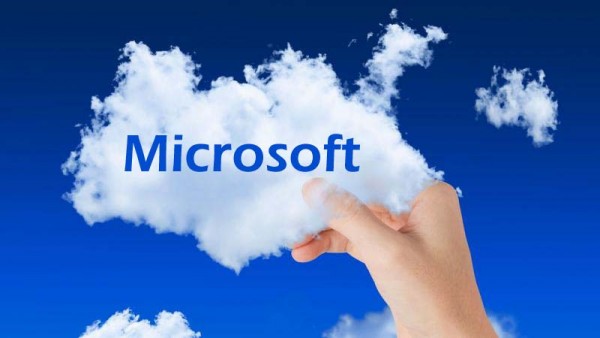
 Windows Phone Failure: Microsoft’s Future is up in the Clouds
Windows Phone Failure: Microsoft’s Future is up in the Clouds
It could have been one of the best mergers of the new millennium. Microsoft and Nokia. Instead, it turned into one of the biggest write-offs in the history of Microsoft. On one side, a giant software company that was late in the tablet game. On the other, a former giant of a phone company, Nokia, that took its time developing a compelling touch-screen interface. Would anything good come out of two giants cut down to size? Many doubted and many were as hopeful. But yes, good quality Windows Phones. What came out of the Nokia purchase was ripe with potential to challenge the dominance of iPhones and Androids. Unfortunately, this potential was squandered by poor marketing and mismanagement. So now, after a staggering loss of its own making, Microsoft looks up to the cloud for deliverance.
Windows phones were fresh. The tiled interface was quite unique giving easy access to all the phones’ functions and apps. Live tiles wee like Android widgets, except more active. Keeping the screen fresh and different almost every second as well as informing the user of news and status updates. The interface was simplistic and colorful. The Windows Phone OS, coupled with great cameras and quality build were great. Many of those who switched to Windows phones quickly liked it. So what happened? Unfortunately, Windows phones lacked the proper marketing or wasn’t marketed enough. In the world of smartphones, Windows phones only had a three percent market share slightly topped by an equally struggling Blackberry. All this despite good print magazine and blog reviews. As one legendary technology columnist said, Windows Phones were okay. They perform well for their respective price ranges. The problem was they weren’t pushed hard enough into the hands of casual buyers.
“I had a couple of Lumia phone review units a few years ago, including the luxurious Lumia 800 which failed to boot within a month. Because it was sealed, it was apparently impossible to repair. But nobody at Nokia or Microsoft wanted to discuss it. They just wanted the phone back.
That pretty much summarizes the promotional efforts by Microsoft for these phones and this OS. Thus they are never in the conversation. There are no roadshows, there are no people hounding the media to use the phones. As I’ve discussed for years, even the advertising campaigns, while well-produced, were all counter-productive.
Microsoft needs to find the people who orchestrated the Windows 95 rollout. They can’t all be dead. Now that was a group of marketers who could promote.”
–John C. Dvorak, PC Magazine
If you look for Windows Phone commercials in YouTube, you’ll find just a handful of them. A handful of entertaining ones though. Allegedly, when people go look for Windows phones in stores, they get shunted over to the iPhone and Android departments. It’s either a lack of faith of the salespeople or the stigma of the old Windows Mobile. And lastly, the apparent lack of apps. It’s all over the internet. Windows Phones, lack apps. But honestly, consumers don’t need thousands upon thousands of similar picture editors, similar games, similar notepads, similar music players, etc… But that’s reality. Why the lack of apps? Because developers want platform popularity. Why isn’t the Windows phone popular? Because of the lack of marketing and promotion. Windows phones couldn’t gain enough critical mass. But fans don’t fret. Microsoft is still at it, especially now after the release of Windows 10.
Windows 10 is now the focus of Microsoft along with its cloud-based platforms and services. Ever since Microsoft CEO Satya Nadella took the helm, he has been enthusiastically promoting and shifting Microsoft to cloud computing. So far, the cloud has been has nothing but silver linings for Microsoft and the company seeks to keep it that way. Unlike its consumer devices and products, products such as Office 365 and Microsoft Azure require a different approach to promotion which Microsoft seems to have a handle in. Microsoft claims to have Azure in 85 percent of fortune 500 companies with 60 percent of that 85 are using two or more cloud solutions. Focus on the cloud and Windows 10 is what Satya Nadella sold to investors after the Nokia write-off.
“We need to own the cloud… The cloud market is being made right now and I promise you, if we don’t own it with the customer, somebody else is going to own it. We have the technology, we have the solutions this is time to own the cloud.”
—B. Kevin Turner, Microsoft COO
They’re serious wit this one, investing tens of billions in beefing up their infrastructure to amp-up their Office 365, OneDrive, SharePoint, Dynamics and Azure services to compete with Oracle, HP, Google, Amazon and IBM. As they should be after experiencing such a loss with Nokia. Microsoft is currently on a roll with the cloud earning a modest 8 billion dollars for the year. If they don’t waver from their current focus, they expect to earn 20 billion from cloud services by 2018. It shouldn’t be difficult for Satya Nadella since the cloud is his specialty. But just like Coca-Cola, ubiquitous as it is, could still use a promotion or two.
Will the cloud save Microsoft? It could. With all the competition, the company should also focus on quality, promotion, promotion and promotion.

